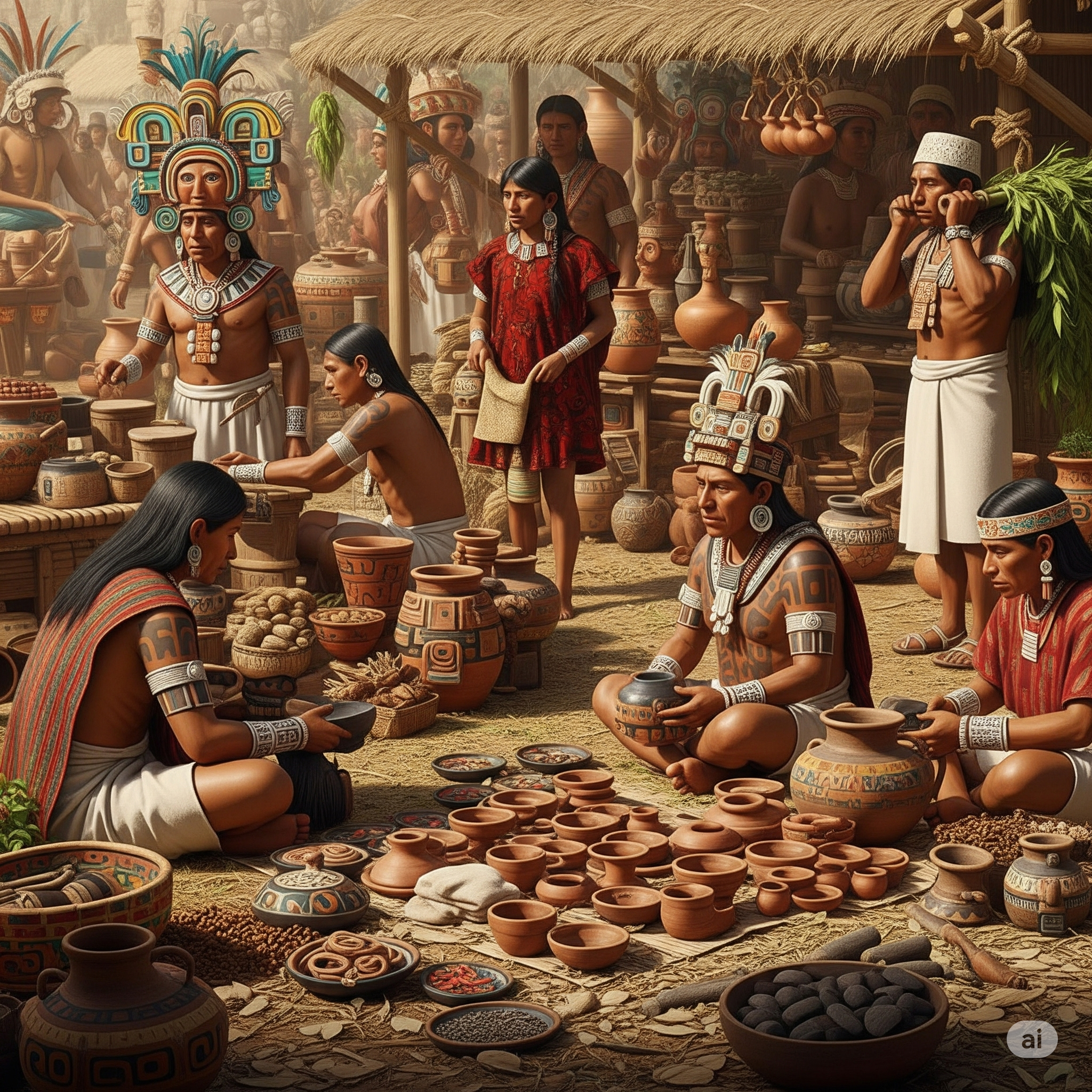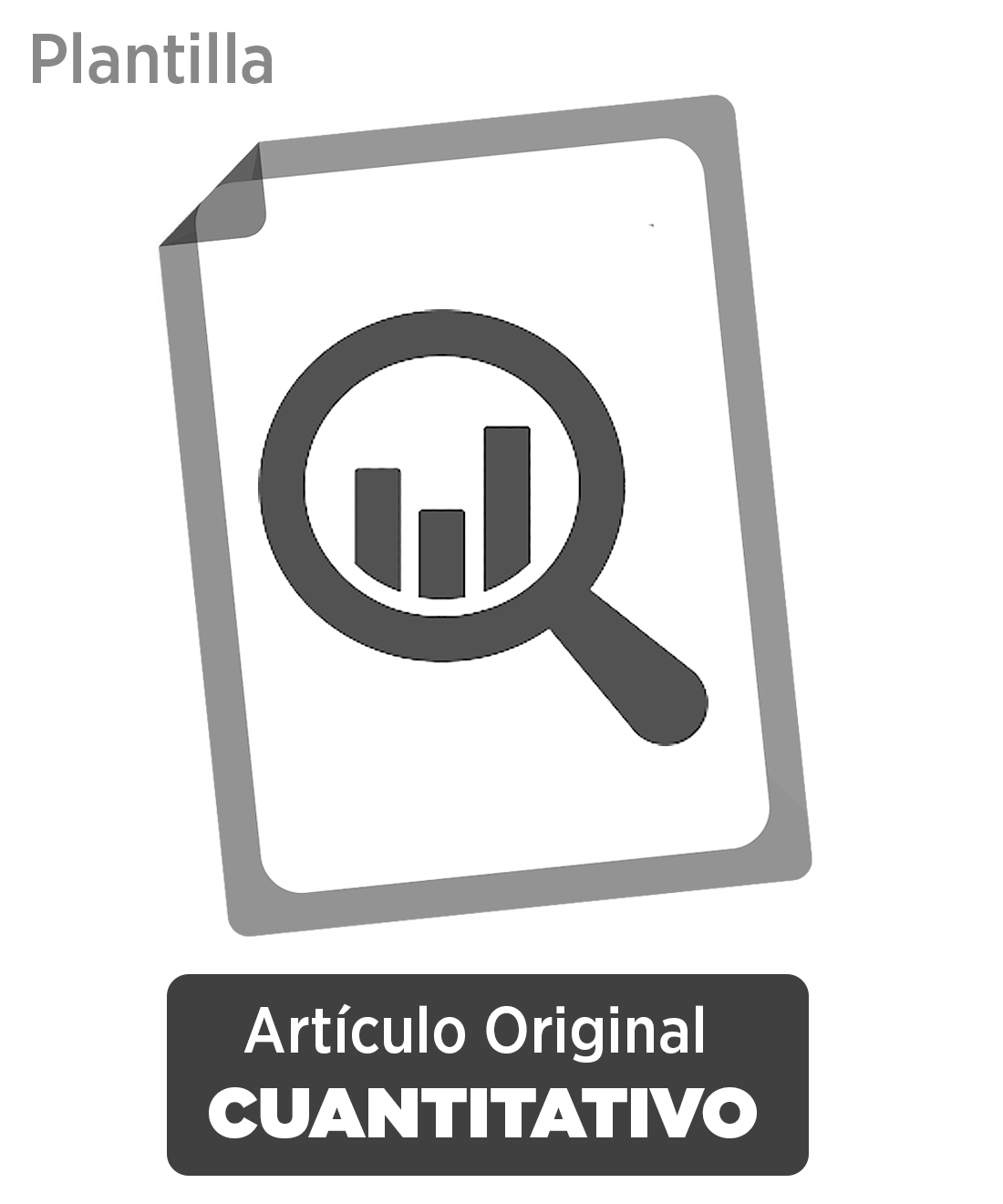The Moche culture: architectural mastery and sustainability in their environment
DOI:
https://doi.org/10.37711/repiama.2025.2.1.1Keywords:
Moche architecture, hispanic urbanism, Moche culture, Moche, constructions practiceAbstract
Objective. To examine the architecture of the Moche culture in order to understand how its construction practices reflect its adaptation to the environment, its cultural values and its social structure. Method. Through an in-depth analysis of their construction techniques and architectural elements, we sought to identify how these factors allowed the Moche to consolidate in the coastal region of ancient Peru and express their beliefs and social organization through their buildings. Results. Several Key findings were revealed. Thus, it was identified that the Moche employed innovative techniques in adobe construction to resist the adverse seismic and climatic conditions of their environment. Monumental buildings, such as the Huaca del Sol and Huaca de la Luna, stood out for their decorative friezes, which illustrate the use of architecture as a means of religious and cultural expression, consolidating a collective identity. In addition, the study shows that the Moche urban distribution organized spaces according to a hierarchical social structure, separating residential, productive and ceremonial areas, which evidences a society with clearly defined roles and a focus on the functionality of its habitational and ceremonial spaces. Conclusions. Moche architecture reflects an adaptation, both functional and symbolic, to its natural and social environment. Their constructions, whether monumental or residential, not only responded to practical and climatic needs, but also acted as vehicles of cultural expression and cosmovision, which shows a deep connection between the physical space and the cultural identity of the Moche society.
Downloads
References
Alva López, F. G. (2023). La arquitectura moche del Perú: análisis, interpretación y relación con la arquitectura pe-ruana [Tesis de doctorado, Universitat Politècnica de Catalunya]. Tesis Doctorals en Xarxa. https://www.tdx.cat/handle/10803/689314#page=1
Alva, W., y Donnan, C. B. (1993). Royal Tombs of Sipan (2a ed.). Fowler Museum of Cultural History.Bawden, G. (1996). The moche. The Peoples of America. Black-well Publishers.
Bélisle, V. (2008). El Horizonte Medio en el Valle de Santa:con-tinuidad y discontinuidad con los Mochicas del Intermedio Temprano [conferencia]. Primer Congreso Internacional de Jóvenes Investigadores de la Cultura Mochica, Lima, Perú. http://smally.cc/8vd20
Bernier, H. (2008, 4 y 5 de agosto). La especialización artesanal en el sitio Huacas de moche: contextos de producción y fun-ción sociopolítica [ponencia]. Primer congreso internacional de jóvenes investigadores de la Cultura Mochica, Lima, Perú. Fondo Editorial de la Pontificia Universidad Católica del Perú. https://repositorio.pucp.edu.pe/server/api/core/bit-streams/e65ee3dd-a6af-4378-b425-6ec86cbe7a01/content
Bernier H. (2009). La producción especializada de la cerámica doméstica y ritual Mochica. Researchgate. https://www.re-searchgate.net/publication/270069787_La_produccion_es-pecializada_de_la_ceramica_domestica_y_ritual_Mochica
Canziani Amico, J. (2012). Ciudad y territorio en los Andes: contribuciones a la historia del urbanismo prehispáni-co. Pontificia Universidad Católica del Perú. https://doi.org/10.18800/9786124146022
Campana, C. (1983). La vivienda mochica. Perú Varese. https://primo.getty.edu/primo-explore/fulldisplay/GETTY_ALMA21132782420001551/GRI
Castillo Butters, L. J., y Uceda Castillo, S. (2019). Los Mochicas de la Costa Norte del Perú. Researchgate.net. https://www.researchgate.net/publication/267551967_Los_Mochicas_de_la_Costa_Norte_del_Peru
Castillo Luján, F. A. (2015). Las residencias Moches: un primer análisis de la sintaxis espacial en las huacas del Sol y de la Luna, Perú. Arqueología de la Arquitectura, 12, e036. doi: http://dx.doi.org/10.3989/arq.arqt.2015.127
Chapdelaine, C. (1999, 1-7 de agosto). La ciudad de moche: ur-banismo y estado [ponencia]. Segundo Coloquio sobre la Cul-tura Moche, Trujillo, Perú. https://doi.org/10.18800/F3433M
Chero Zurita, L. (2023). La arquitectura de la plataforma funerar-ia de Sipán. Llalliq, 3(2), 242-261. https://doi.org/10.32911/llalliq.2023.v3.n2.1095
Donnan, C. B. (1996). moche Funerary Practice. Dumbarton Oaks Research Library and Collection. Dumbarton Oaks Research Library and Collection.
Dumais, F. É. (2004, 4 y 5 de octubre). La tecnología de los tejidos Mochica no decorados en el Valle de Santa, Costa Norte del Perú [ponencia] Primer congreso internacional de jóvenes investigadores de la Cultura Mochica, Lima, Perú.
El cofrecito. (2017, 8 de octubre). El señor de Sipán: Cultura Mochica. ELCOFRESITO. https://elcofresito.blogspot.com/2017/10/el-senor-de-sipan-cultura-mochica.html
Franco Jordán, R. G. (2023). El patrón de la arquitectura monu-mental del territorio moche del sur: el área nuclear y sus extremos. Arqueología Y Sociedad, 1(39), 87-119. https://doi.org/10.15381/arqueolsoc.2023n39.e25665
Gálvez, C., Murga, A., Vargas, D., y Ríos, H. (2021, 12 de ju-nio). Secuencia y cambios en los materiales y técnicas constructivas de la Huaca Cao Viejo, complejo El Brujo. Arqueología del Perú. https://arqueologiadelperu.com/tag/huaca-cao-viejo/
Gutiérrez, B. (2008, 4 y 5 de agosto). Plataforma Uhle: enter-rando y desenterrando muertos [ponencia] Primer con-greso internacional de jóvenes investigadores de la Cul-tura Mochica, Lima, Perú. https://repositorio.pucp.edu.pe/items/35e19fef-92f6-4ebf-bae2-c49fc30005c7
Hablemos de culturas. (2025). Cultura mochica: historia, ori-gen, características, y mucho más. Hablemos de culturas. https://hablemosdeculturas.com/cultura-mochica/
Hocquenghem, A. M. (2009). Los Mochicas: Arqueología, etno-historia y arte. Instituto de Estudios Peruanos.
Jarque, F. (2015, 25 de febrero). Mensaje de ultratum-ba. El País. https://elpais.com/elpais/2015/02/26/eps/1424964113_716455.html
Lalupu Llanos, R. N. (2019). La cultura Moche [tesis de licencia-tura, Universidad Nacional de Trujillo]. Repositorio Institu-cional UNT. https://dspace.unitru.edu.pe/items/6e9d4ead-cd87-4356-9fa5-775521518431
Larco Hoyle, R. (1938). Los mochicas (Tomo I). Museo Arque-ológico Rafael Larco Herrera.
Lockard, G. D. (2008, 4 y 5 de agosto). A new view of Galindo: results of the Galindo Archaeological Project [ponencia]Primer congreso internacional de jóvenes investigadores de la Cultura Mochica, Lima, Perú. https://repositorio.pucp.edu.pe/items/35e19fef-92f6-4ebf-bae2-c49fc30005c7
López Estupiñán, L., y Rodríguez Pérez, L. C. (2016, 6 de ju-nio). La cronofotografía y la morfometría geométrica como técnicas analíticas en la interpretación de iconografías se-cuenciales del sitio arqueológico huaca de la luna, moche, Perú. Marguaré, 30(1), 187-210. https://dialnet.unirioja.es/descarga/articulo/5848947.pdf
Maria Jesús. (2020, 31 de diciembre). América latina entre lo real y lo fantástico - (III) Los espacios del mundo Moche - Museo Larco: la colección erótica de memoria inca más grande de Perú – Trujillo. Me gusta y te lo cuento. https://susiripa.blogspot.com/2020/
Moutarde, F. (2004, 4 y 5 de agosto). Los carbones hablan: un estudio del material antracológico de la Plataforma Uhle, Huaca de la Luna. Un acercamiento a la economía vegetal de la Costa Norte del Perú en la época Mochica[ponencia]Primer congreso internacional de jóvenes investigadores de la Cultura Mochica, Lima, Perú.
Narváez V., A. (1994). La Mina: Una Tumba moche I en el Valle de Jequetepeque. En, S. Uceda y E. Mujica (Eds.). Moche. Propuestas y Perspectivas (pp. 59-92). Universidad Nacio-nal de La Libertad.
Paz Salazar, E. (2023). Materiales de construcción en la cultura chimú y mochica. Universidad Nacional de Trujillo. https://www.studocu.com/pe/document/universidad-nacional-de-trujillo/materiales-de-construccion/materiales-de-construc-cion-en-la-cultura-chimu-y-mochica/56657473
Pérez Agustina, J. (2019). Los Mochicas: ingenieros de la costa norte de los Andes Centrales [Trabajo final de grado, Uni-versitat de Barcelona]. Dipòsit Digital de la Universitat de Barcelona. https://hdl.handle.net/2445/148428.
Pimentel Aliaga, L. (2012). Estudio de la infraestructura hidráu-lica de las culturas moche y chimú [Tesis de pregrado, Uni-versidad Nacional de Ingeniería]. Repositorio Institucional UNI. http://cybertesis.uni.edu.pe/handle/uni/3408
Régulo, F. (2023). Gestión arqueológico-turística y su influencia en el desarrollo socioeconómico e identidad de los pobla-dores costeros de la región La Libertad [Tesis de doctorado, Universidad Nacional de Trujillo]. Repositorio Institucional UNIT. https://dspace.unitru.edu.pe/items/6877f6f1-6a8d-4417-9449-440eb877721e
Rengifo Chunga, C. E., y Rojas Vega, C. (2008, 4 y 5 de agos-to). Talleres especializados en el conjunto arqueológico Huacas de moche: el carácter de los especialistas y su producción[ponencia] Primer Congreso Internacional de Jóvenes Investigadores de la Cultura Mochica, Lima, Perú.https://repositorio.pucp.edu.pe/items/35e19fef-92f6-4ebf-bae2-c49fc30005c7
Ruiz Romero, J. E. (2019). Introducción a la ingeniería hidráuli-ca en la costa norte del Perú durante el período prehispáni-co. Notas históricas y geográficas, (22), 137-157. https://dialnet.unirioja.es/servlet/articulo?codigo=7289894
Shimada, I. (1994). moche Art and Archaeology: New Perspec-tives. National Gallery of Art.
Tello Alcántara, R. (2008, 4 y 5 de agosto). La ocupación moche en el conjunto arquitectónico 35 de Huaca del Sol y de la Luna [ponencia] Primer congreso internacional de jóvenes investi-gadores de la Cultura Mochica, Lima, Perú. https://repositorio.pucp.edu.pe/items/35e19fef-92f6-4ebf-bae2-c49fc30005c7
Tomcelmare. (2018, 2 de abril). New civilization proposal: Moche or Mochica culture. Wildfiregames. https://wildfire-games.com/forum/topic/24171-new-civilization-proposal-moche-or-mochica-culture/page/2/
Tufinio, M. (2008, 4 y 5 de agosto). Huaca de la Luna: arqui-tectura y sacrificios humanos [ponencia] Primer congre-so internacional de jóvenes investigadores de la Cultura Mochica, Lima, Perú. https://repositorio.pucp.edu.pe/items/35e19fef-92f6-4ebf-bae2-c49fc30005c7
Uceda, S. (2003, 1 y 7 de agosto). El complejo arquitectónico re-ligioso moche de Huaca de la Luna: una aproximación a su dinámica ocupacional [ponencia] Segundo Coloquio sobre la Cultura moche, Trujillo, Perú. https://repositorio.pucp.edu.pe/items/35e19fef-92f6-4ebf-bae2-c49fc30005c7
Uceda, S., y Mujica, E. (2003). Moche. Hacia el final del milenio [ponencia] Segundo Coloquio sobre la Cultura moche, Lima, Perú. https://www.academia.edu/58513432/UCE-DA_Santiago_y_El%C3%ADas_MUJICA_editores_2003_moche_Hacia_el_final_del_milenio_TOMO_I
Webtilia. (2020). Los Mochicas: Todo lo que necesitas saber sobre esta cultura prehispánica. El Brujo complejo arque-ológico. https://www.elbrujo.pe/blog/los-mochicas-todo-lo-que-necesitas-saber-sobre-esta-cultura-prehispanica
Zapata, C. (2020, 18 de diciembre). Los adobes con marcas y la organización del trabajo en la sociedad Moche. El brujo complejo arqueológico. https://www.elbrujo.pe/blog/la-or-ganizacion-del-trabajo-en-la-sociedad-moche

Downloads
Published
Issue
Section
License
Copyright (c) 2025 Jhandira Guadalupe Domínguez Palacios (Autor/a)

This work is licensed under a Creative Commons Attribution 4.0 International License.




